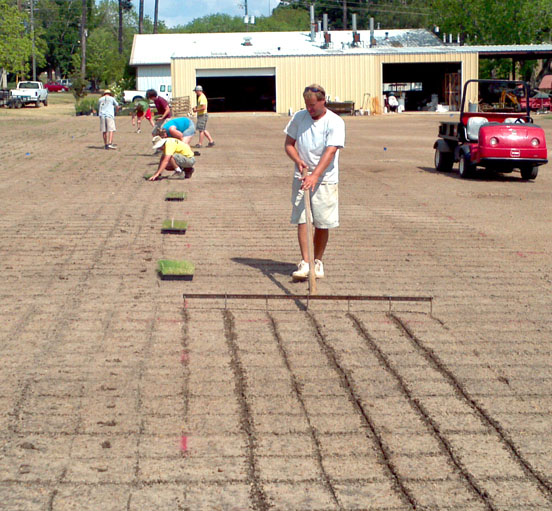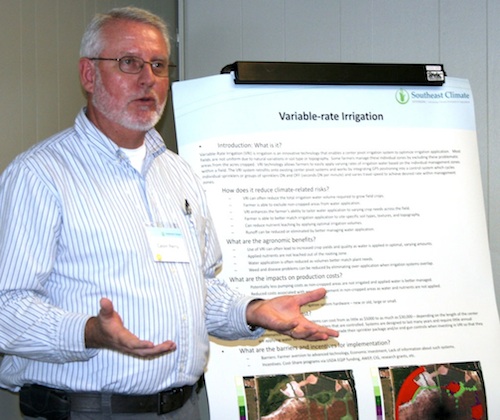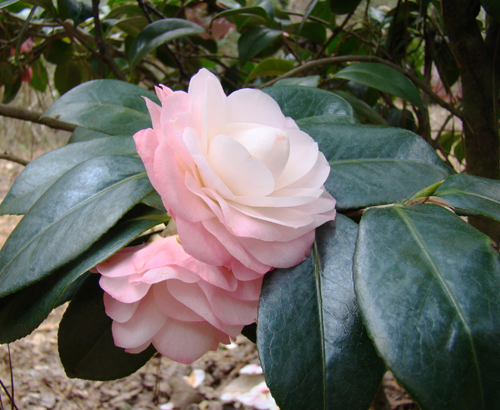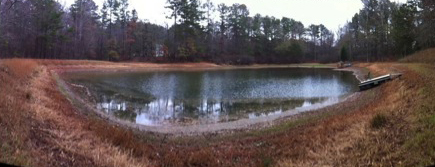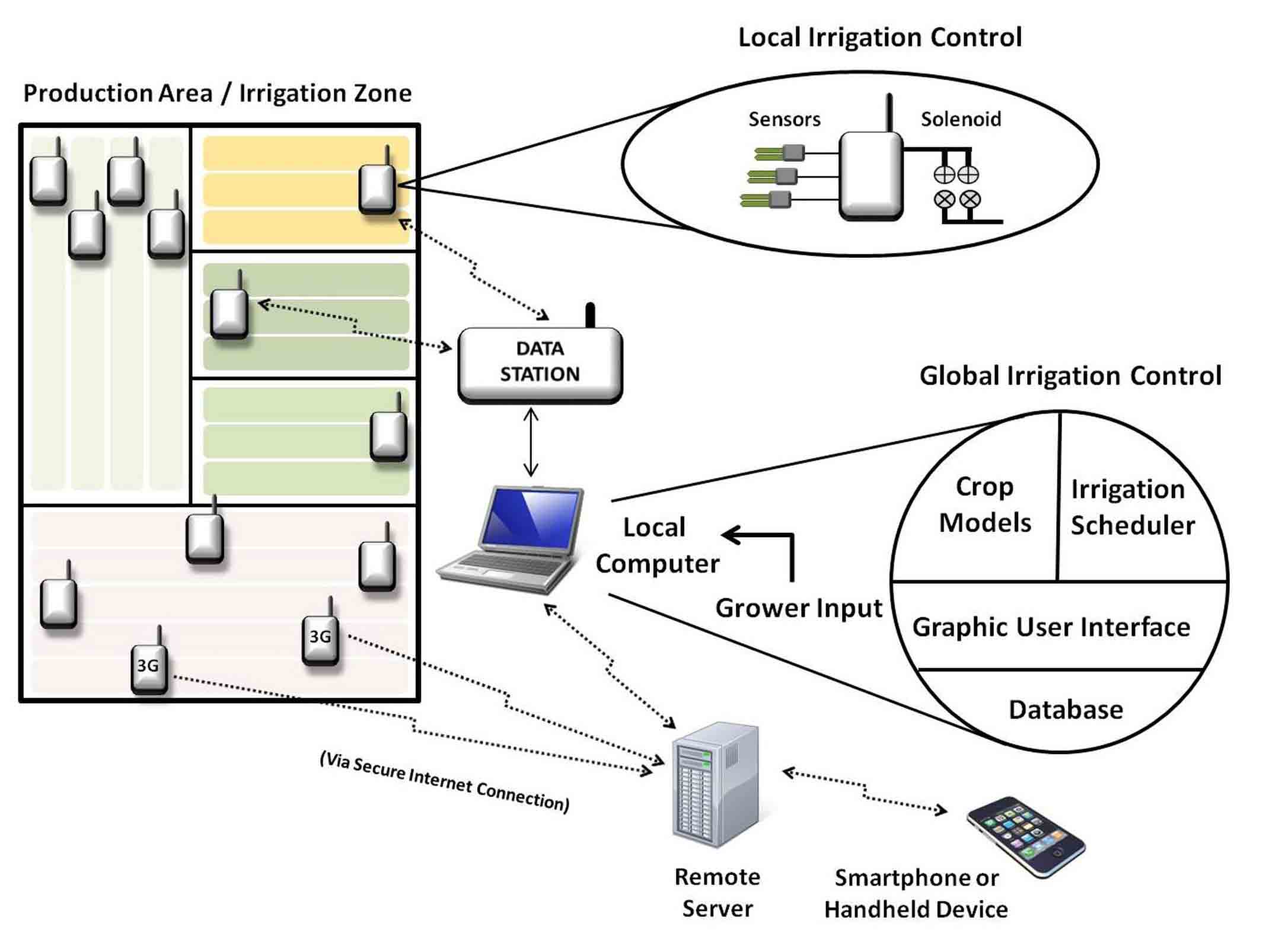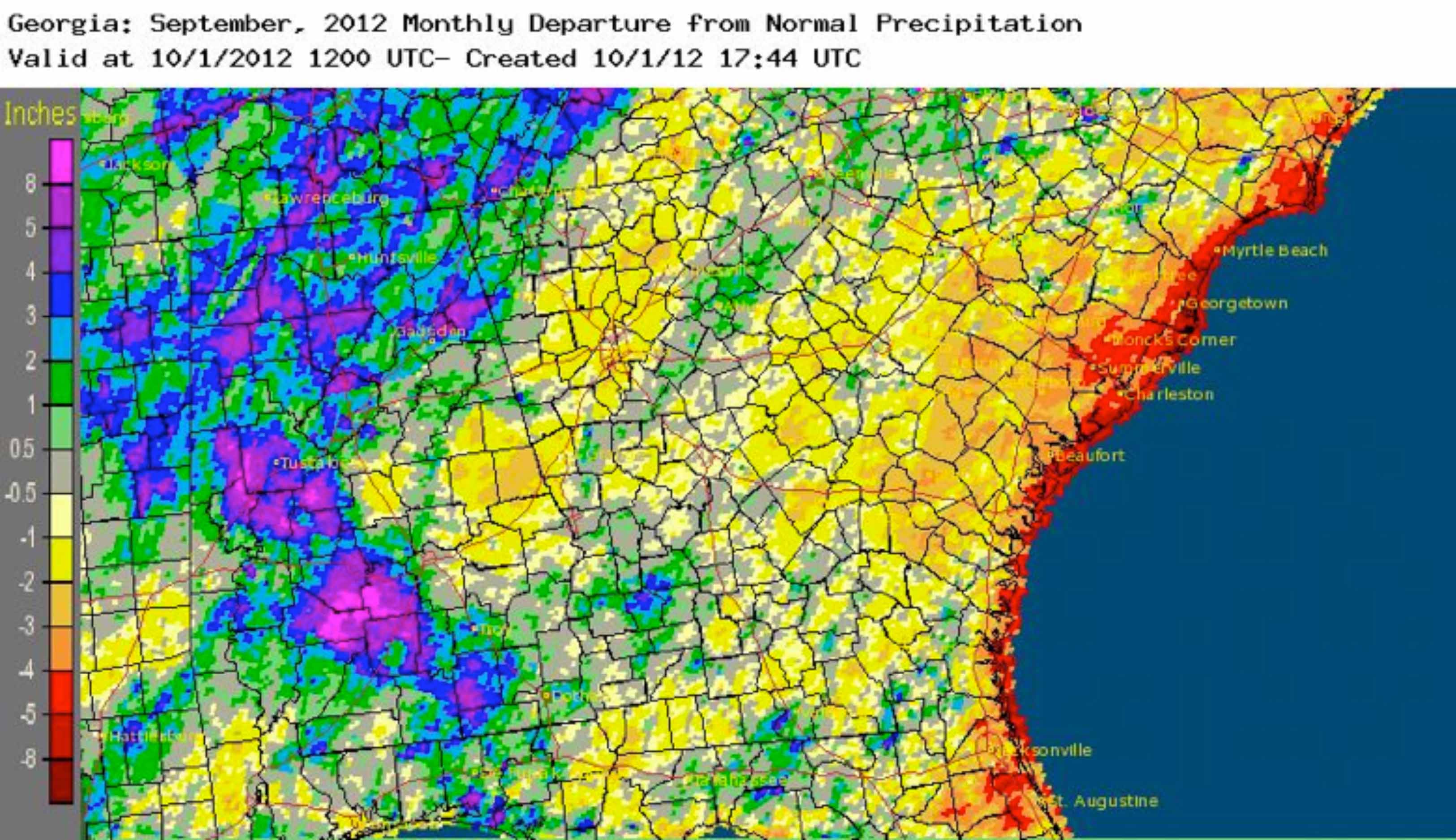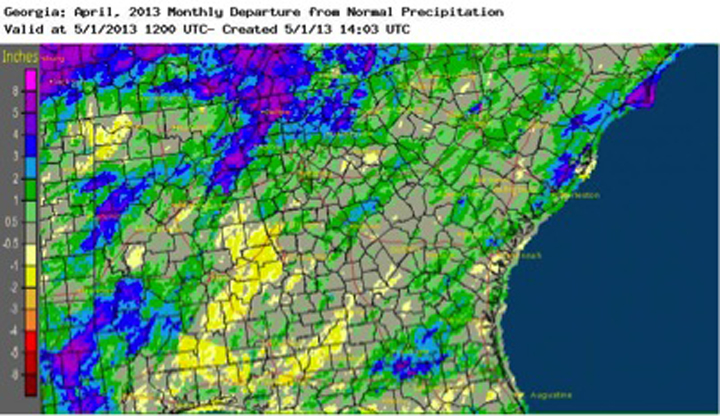 CAES News
CAES News
Drought almost gone
Drought conditions continued to shrink across the state during April due to the seasonal rainfall and cool spring temperatures; the only area of Georgia left in drought is a small sliver along southeast coast.

